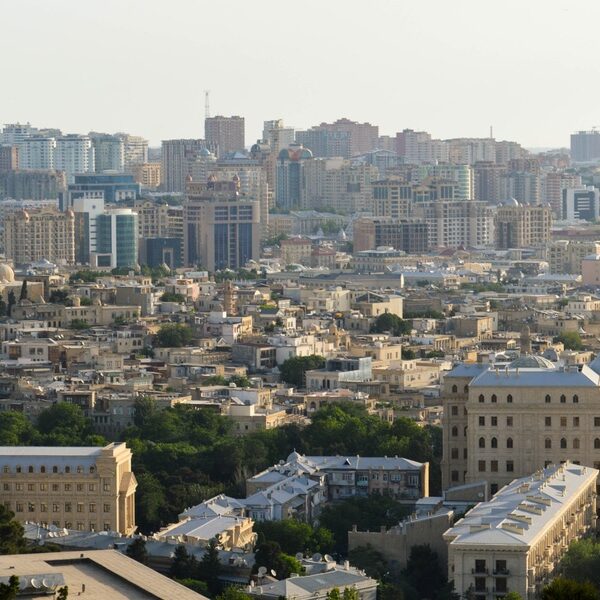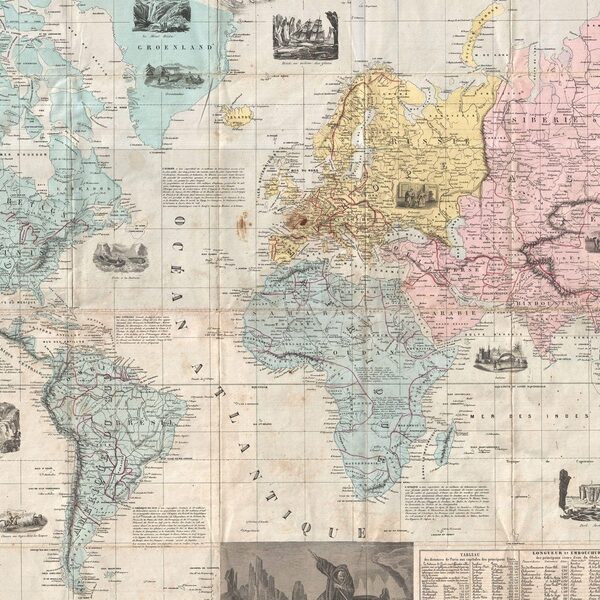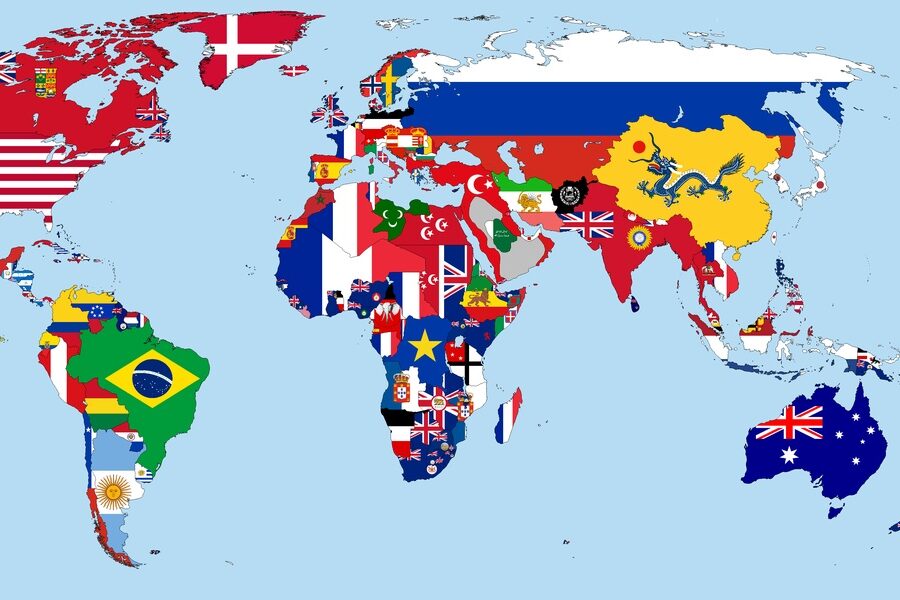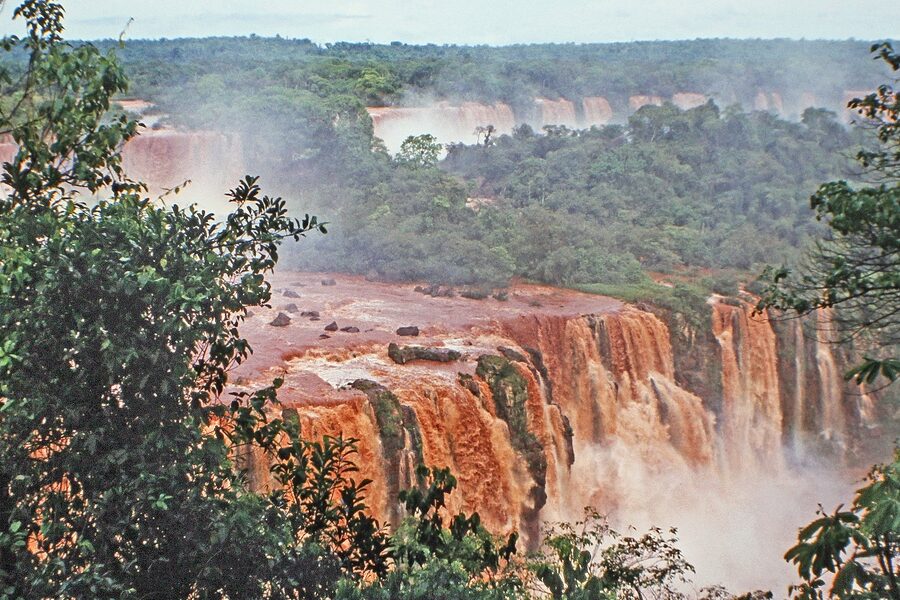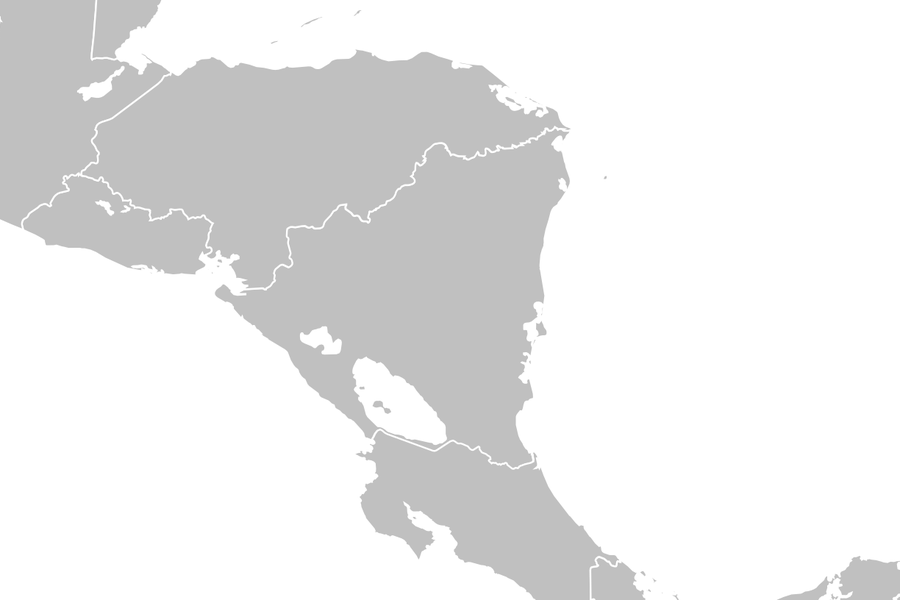Flags are shorthand for history and place; their colors, stripes and symbols often reflect rivers, skies, religions or independence movements. Spotting patterns—like blue and white palettes—helps you see connections between countries and regions at a glance.
There are 61 countries with blue and white flags, ranging from Argentina to Uzbekistan. For each entry you’ll find below Flag (emoji),Colors,Meaning so you can quickly compare designs and symbolism across the list you’ll find below.
How are blue and white colors usually interpreted on national flags?
Blue often represents sky, water or vigilance, while white typically stands for peace, purity or harmony; specific meanings depend on local history and symbols—so the same colors can signify rivers in one country and religious or cultural ideals in another.
Are any blue-and-white flags easily confused with one another?
Yes—several use similar stripes, crosses or shades, so context like proportions, emblems and color tones matters; the Flag (emoji),Colors,Meaning columns below help you spot distinguishing details and avoid mix-ups.
Countries with Blue and White Flags
| Country | Flag (emoji) | Colors | Meaning |
|---|---|---|---|
| Argentina | 🇦🇷 | Light blue,white,yellow | Sky and clouds; sun for independence |
| Australia | 🇦🇺 | Dark blue,white,red | Blue for British heritage; white stars for federation and Southern Cross |
| Azerbaijan | 🇦🇿 | Sky blue,red,green,white | Blue for Turkic heritage; white crescent and star for Islam |
| Belize | 🇧🇿 | Royal blue,red,white,green,brown | Blue for nation; white coat of arms shows trade and resources |
| Botswana | 🇧🇼 | Light blue,black,white | Blue for water; black and white stripes symbolize racial harmony |
| Bosnia and Herzegovina | 🇧🇦 | Blue,yellow,white | Blue and white stars stand for Europe; yellow for bright future |
| Brazil | 🇧🇷 | Green,yellow,blue,white | Blue globe and white stars represent constellations; white for order and peace |
| Cabo Verde | 🇨🇻 | Blue,white,red,yellow | Blue for ocean; white for peace; circle of stars for islands |
| Chile | 🇨🇱 | Blue,white,red | Blue for sky; white for snow of Andes; red for blood of independence |
| Costa Rica | 🇨🇷 | Blue,white,red | Blue for sky and opportunities; white for peace; red for blood and warmth |
| Croatia | 🇭🇷 | Red,white,blue | White and blue in coat of arms reflect historical regions and Croatian identity |
| Cuba | 🇨🇺 | Light blue,white,red | Blue for departments; white for purity; red for blood and independence |
| Czechia | 🇨🇿 | White,red,blue | White for Bohemia; blue for Moravia and Slovakia historical ties |
| Djibouti | 🇩🇯 | Light blue,green,white,red | Blue for the sea and sky; white for peace; red star for unity |
| Dominican Republic | 🇩🇴 | Blue,white,red | White cross for faith and unity; blue for liberty and ideals |
| El Salvador | 🇸🇻 | Light blue,white | Blue for Pacific and sky; white for peace and unity |
| Equatorial Guinea | 🇬🇶 | Green,white,red,blue,yellow | White for peace; blue triangle for sea connecting islands and mainland |
| Estonia | 🇪🇪 | Blue,black,white | Blue for sky; black for soil and past struggle; white for purity |
| Finland | 🇫🇮 | White,blue | Blue for lakes and sky; white for snow |
| France | 🇫🇷 | Blue,white,red | Blue and white for Paris and monarchy; red for revolution and valor |
| Greece | 🇬🇷 | Blue,white | Blue for sea and sky; white for purity and freedom |
| Guatemala | 🇬🇹 | Light blue,white | Blue for the sky; white for purity and peace |
| Honduras | 🇭🇳 | Light blue,white | Blue for the Caribbean and Pacific; white for peace; central stars for unity |
| Iceland | 🇮🇸 | Blue,white,red | Blue for mountains; white for ice and snow; red for volcanic fire |
| India | 🇮🇳 | Saffron,white,green,navy blue | White for peace; navy blue wheel stands for law and dharma |
| Israel | 🇮🇱 | White,blue | White for purity; blue for Jewish prayer shawl and divine |
| Kiribati | 🇰🇮 | Red,blue,yellow,white | Blue for ocean; white waves for sea; yellow sun for tropical location |
| Nauru | 🇳🇷 | Blue,yellow,white | Blue for Pacific; yellow for equator; white star for the island |
| Nepal | 🇳🇵 | Crimson,blue,white | Blue border for peace; white symbols for moon and sun |
| Netherlands | 🇳🇱 | Red,white,blue | Blue for Dutch resistance and heritage; white for peace |
| New Zealand | 🇳🇿 | Dark blue,white,red | Blue for British heritage and ocean; white stars for Southern Cross |
| Nicaragua | 🇳🇮 | Light blue,white | Blue for the two seas; white for peace and purity |
| North Korea | 🇰🇵 | Red,white,blue | White for purity; blue for sovereignty and peace |
| Norway | 🇳🇴 | Red,white,blue | Blue and white cross for Scandinavian heritage and independence |
| Panama | 🇵🇦 | Red,white,blue | Blue and red stars for political parties; white for peace |
| Paraguay | 🇵🇾 | Red,white,blue | White for peace; blue for liberty; red for courage (different emblems each side) |
| Philippines | 🇵🇭 | Blue,white,red,yellow | Blue for peace and justice; white for purity; stars for islands |
| Russia | 🇷🇺 | White,blue,red | White for nobility, blue for faith, red for courage (historic meanings vary) |
| San Marino | 🇸🇲 | White,light blue | White for peace; blue for liberty and skies |
| Serbia | 🇷🇸 | Red,blue,white | Blue and white part of Pan-Slavic colors; crest for heritage |
| Sierra Leone | 🇸🇱 | Green,white,blue | Blue for sea; white for unity and justice |
| Slovakia | 🇸🇰 | White,blue,red | White and blue as Slavic colors; crest for national heritage |
| Slovenia | 🇸🇮 | White,blue,red | White and blue from historical coat of arms; red for common Slavic heritage |
| Somalia | 🇸🇴 | Light blue,white | Blue for sky and United Nations support; white star for unity |
| South Korea | 🇰🇷 | White,red,blue,black | White for peace; blue and red yin-yang for balance |
| Taiwan (Republic of China) | 🇹🇼 | Red,blue,white | Blue for liberty and nationalism; white sun for equality |
| Thailand | 🇹🇭 | Red,white,blue | Blue for monarchy; white for religion; red for nation |
| Tuvalu | 🇹🇻 | Light blue,yellow,white,red | Blue for ocean; Union Jack shows ties to the UK; white appears in Union Jack |
| United Kingdom | 🇬🇧 | Blue,white,red | Blue and white for St Andrew and St George; red for St Patrick |
| United States | 🇺🇸 | Red,white,blue | Blue canton for union; white for purity and liberty |
| Uruguay | 🇺🇾 | Light blue,white,yellow | Blue and white stripes for rivers and skies; sun for independence |
| Uzbekistan | 🇺🇿 | Blue,white,green,red | Blue for Turkic heritage; white for peace and honesty |
| Fiji | 🇫🇯 | Light blue,white,red,yellow,green,brown | Light blue for Pacific; white and red in Union Jack and shield signify links |
| Marshall Islands | 🇲🇭 | Deep blue,orange,white,yellow | Blue for ocean; white and orange rays for islands and the equator |
| Micronesia (Federated States of) | 🇫🇲 | Light blue,white | Blue for the Pacific; white stars for the four states |
| Namibia | 🇳🇦 | Blue,red,green,white,yellow | Blue for sky and Atlantic; white for peace; sun for warmth |
| Samoa | 🇼🇸 | Red,white,blue | Blue for Southern Cross; white for purity; red for courage |
| Haiti | 🇭🇹 | Blue,red,white,green | Blue and red for the union of people; white for the coat of arms background |
| Liberia | 🇱🇷 | Red,white,blue | Blue canton and white star echo US ties; white for liberty |
| Luxembourg | 🇱🇭 | Red,white,light blue | Light blue for the river and nation; white for peace |
| Seychelles | 🇸🇨 | Blue,yellow,red,white,green | Blue for sky and sea; white for social justice; multiple colors for unity |
Descriptions
Argentina
A light-blue white light-blue horizontal triband with a radiant yellow Sun of May in the center. The blue evokes the sky and Río de la Plata, while the sun represents independence—widely recognized in South American iconography and sporting kits.
Australia
A dark-blue field with the Union Jack in the canton, a large white Commonwealth Star below it, and the white Southern Cross constellation on the fly. It signals British historical ties, national unity, and the southern-hemisphere location.
Azerbaijan
Horizontal sky-blue, red, and green bands with a white crescent and eight-point star centered on the red stripe. The colors and symbols emphasize Turkic roots, progress, and Islamic heritage in the Caucasus.
Belize
A royal-blue field with narrow red stripes top and bottom and a central white disc bearing a detailed coat of arms. That white emblem depicts tools, mahogany, and a ship—key historic symbols of Belize’s colonial and maritime past.
Botswana
A light-blue field with a central black horizontal stripe edged in white. The blue stands for water (and life), while the black and white bands represent the nation’s commitment to harmony between different communities.
Bosnia and Herzegovina
A blue triangular field with a diagonal band of white five-pointed stars and a golden triangle. The blue and white stars suggest European identity and unity, while the design reflects the country’s geographic shape and aspirations.
Brazil
A green flag with a yellow diamond enclosing a blue globe with white stars and a white band bearing the national motto. The blue celestial sphere and white stars depict the sky over Rio de Janeiro on independence day.
Cabo Verde
A deep-blue field with three horizontal bands of white and red toward the lower hoist and a circle of yellow five-pointed stars. The blue symbolizes the Atlantic, white peace, and the stars represent the archipelago’s islands.
Chile
A blue canton with a white five-pointed star, beside white and red horizontal bands. The lone star and blue canton evoke guidance and the sky, while white recalls the Andes’ snow-capped peaks.
Costa Rica
Five horizontal bands—blue,white,double-width red,white,blue—with the national coat of arms on the red band near the hoist. Blue and white are prominent and symbolize ideals like freedom, peace, and prosperity.
Croatia
Three horizontal bands of red, white, and blue with the distinctive red-and-white chequered shield (and crown of shields) centered. The white and blue are part of the Pan-Slavic colors and regional heraldry tied to national history.
Cuba
Five horizontal light-blue and white stripes with a red equilateral triangle at the hoist containing a white star. The stripes and star are closely associated with Cuba’s 19th-century independence movement.
Czechia
A horizontal white-over-red bicolor with a blue isosceles triangle at the hoist. The white and blue are traditional Czech colors and the blue triangle adds a distinct geometric identifier among European flags.
Djibouti
Two horizontal bands of light blue and green with a white isosceles triangle at the hoist bearing a red five-pointed star. The blue and white speak to the coastal geography and aspirations for peace.
Dominican Republic
A white-centered cross dividing the flag into four rectangles—blue and red—bearing the national coat of arms at center. The white cross is prominent, and blue and white signify liberty and national identity.
El Salvador
Three horizontal bands: light-blue, white, light-blue with the national coat of arms centered on white. The blue bands flank the white, evoking the isthmus’ seas and the desire for peace.
Equatorial Guinea
Horizontal green-white-red tricolor with a blue triangle at the hoist and a centered coat of arms. The white band speaks of peace, while the blue triangle represents the sea separating islands from the mainland.
Estonia
Three horizontal bands of blue, black, and white. The blue and white framing black create a distinctive Baltic identity, often used to emphasize Estonia’s national revival and northern location.
Finland
A white field with a blue Nordic cross offset to the hoist. The simple cross and the stark white-and-blue palette are instantly associated with Finland’s snowy landscapes and numerous lakes.
France
A vertical blue-white-red tricolor. The blue and white occupy the hoist and center, historically linked to Parisian colors and national heritage, now a universal emblem of the French Republic.
Greece
Nine horizontal blue-and-white stripes with a blue canton bearing a white cross. The pattern is iconic of Greece, recalling the Aegean Sea and the national motto of independence and faith.
Guatemala
Two light-blue vertical bands flanking a white center with the national coat of arms. The blue and white are tied to the country’s geography and its 19th-century independence symbolism.
Honduras
Three horizontal bands of light blue-white-light blue with five blue stars arranged in an X on the white band. The arrangement signals unity among Central American states.
Iceland
A bright-blue field with a white-fimbriated red Nordic cross. The contrasting white and blue recall glacial landscapes, while the red suggests volcanic geology, creating a vivid northern-Atlantic emblem.
India
A horizontal saffron-white-green tricolor with a navy-blue 24-spoke Ashoka Chakra centered on the white band. The blue wheel is small but central, symbolizing righteousness and continuity of law.
Israel
White field with two horizontal blue stripes near the top and bottom and a central blue Star of David. The blue-and-white scheme references traditional Jewish symbols and modern Zionist identity.
Kiribati
Upper red field with a golden rising sun above a blue lower field with white wavy bands. The white waves on blue clearly identify the flag as representing a Pacific island nation.
Nauru
A deep-blue field with a thin horizontal yellow stripe below the center and a white twelve-point star near the lower hoist. The white star and blue sea motif mark the island’s place on the map.
Nepal
A unique non-rectangular, crimson flag with a blue border and white moon and sun emblems. The blue edging and white celestial symbols are essential identifiers for Nepal’s distinct national flag.
Netherlands
A horizontal tricolor of red, white, and blue. The white center stripe makes the blue prominent; the design is one of Europe’s oldest tricolors and a longstanding national symbol.
New Zealand
A dark-blue ensign with the Union Jack in the canton and four red stars outlined in white on the fly, representing the Southern Cross. The white outlines enhance the blue-star motif.
Nicaragua
Three horizontal bands: light-blue, white, light-blue with the national coat of arms centered on the white band. The two blue bands symbolize the Pacific and Atlantic surrounding the country.
North Korea
A wide central red band edged by thin white and blue stripes with a white circle and red star at the hoist. The white and blue elements frame the red ideological centerpiece.
Norway
A red field with a blue Nordic cross outlined in white. The white-bordered blue cross is strongly associated with Scandinavian identity and Norway’s maritime and northern character.
Panama
Quartered white-and-red with blue and red five-pointed stars in opposing white quarters and contrasting colored rectangles. The white fields and blue star are central visual cues for Panama’s national flag.
Paraguay
A horizontal red-white-blue tricolor with different emblems on each side of the white band; the colors follow regional tradition and emphasize national values and independence.
Philippines
Two horizontal bands of blue and red with a white triangle at the hoist bearing a yellow sun and three stars. The blue-and-white pairing is prominent and used to signal peace in peacetime.
Russia
A horizontal white-blue-red tricolor. The white and blue center and top bands are long-standing symbols used in many Slavic nations and easily recognized worldwide.
San Marino
Two horizontal bands of white and light blue with the national coat of arms centered. The pale blue and white combination is distinctive among small European states and tied to republican traditions.
Serbia
A horizontal red-blue-white tricolor with the Serbian coat of arms offset toward the hoist. The white band and blue middle are central to the flag’s Slavic color heritage.
Sierra Leone
Three horizontal bands of green, white, and blue. The white center stripe separates land (green) and sea (blue), symbolizing peace, unity, and the country’s coastal identity.
Slovakia
A horizontal white-blue-red tricolor with the national coat of arms (double cross on three hills) toward the hoist. The white and blue bands form part of Slovakia’s Slavic visual tradition.
Slovenia
A horizontal white-blue-red tricolor with the Slovenian coat of arms (mountain and stars) on the hoist. The white and blue are prominent in the upper two bands and national symbols.
Somalia
A simple light-blue field with a single white five-pointed star at the center. The stark two-color design makes Somalia’s flag one of the most instantly recognizable in Africa.
South Korea
A white field with a central red-and-blue Taeguk and four black trigrams at the corners. The white background and blue half of the central symbol are essential to identifying the national flag.
Taiwan (Republic of China)
A red field with a navy-blue canton bearing a white sun with twelve rays. The blue canton and white sun are closely associated with the Republic of China’s political history and identity.
Thailand
Five horizontal bands of red, white, blue (double-width), white, red. The broad central blue stripe framed by white is a defining visual feature of Thailand’s national flag.
Tuvalu
A light-blue field with the Union Jack in the canton and nine yellow stars on the fly. The Union Jack contains white and blue, and the pale-blue backdrop emphasizes the Pacific setting.
United Kingdom
A composite flag of blue, white, and red combining the crosses of patron saints. The blue field and white diagonals are crucial identifiers, widely used across many national and subnational flags.
United States
Thirteen horizontal red-and-white stripes with a blue canton containing fifty white stars. The white stars on the blue field are the most recognizable element, symbolizing states and national unity.
Uruguay
Nine horizontal white and light-blue stripes with a white canton bearing a radiant yellow Sun of May. The blue-and-white striping and sun motif echo regional independence symbolism.
Uzbekistan
Blue, white, and green horizontal bands separated by thin red fimbriations with a crescent and twelve stars in the canton. The blue and white are prominent and reference cultural roots and national ideals.
Fiji
A light-blue field with the Union Jack in the canton and a shielded coat of arms on the fly featuring white elements. The pale-blue background and white details identify Fiji as a Pacific nation.
Marshall Islands
A deep-blue field with diagonal orange and white stripes radiating from the lower hoist and a white star. The white stripe and star contrast sharply with the blue sea background.
Micronesia (Federated States of)
A light-blue field with four white five-pointed stars arranged in a diamond. The simplicity of the blue field and white stars strongly evokes the oceanic geography and federal composition.
Namibia
A diagonal red band edged in white separates blue and green triangles, with a golden sun in the hoist. The white edging and strong blue area help identify Namibia’s vibrant multicolored design.
Samoa
A red field with a blue canton bearing five white stars representing the Southern Cross. The blue-and-white stars against red make Samoa’s flag easy to spot among Pacific island flags.
Haiti
Horizontal blue and red bands with a white panel bearing the national coat of arms centered. The white coat of arms contains multiple symbols, while the blue and white elements remain visually central.
Liberia
Similar to the U.S. flag, Liberia’s design features eleven red-and-white stripes and a blue canton with a single white star. The white star on blue remains a key identifying element.
Luxembourg
A horizontal red-white-light-blue tricolor. The pale blue topography makes Luxembourg’s flag visually similar to the Netherlands but lighter in blue shade; white is the central band.
Seychelles
Five oblique bands of blue, yellow, red, white, and green radiate from the lower hoist. The white stripe is one of the central rays and pairs with blue to produce a vivid national palette.


